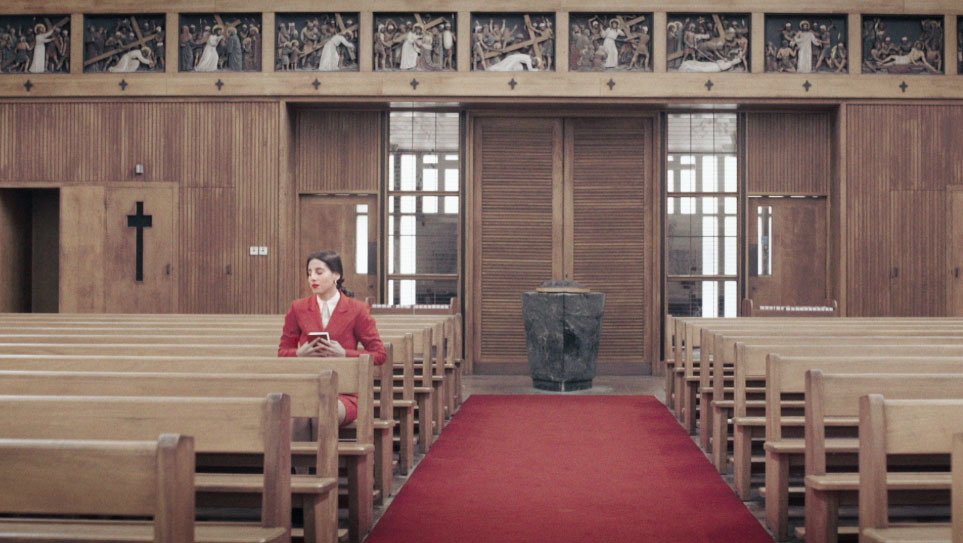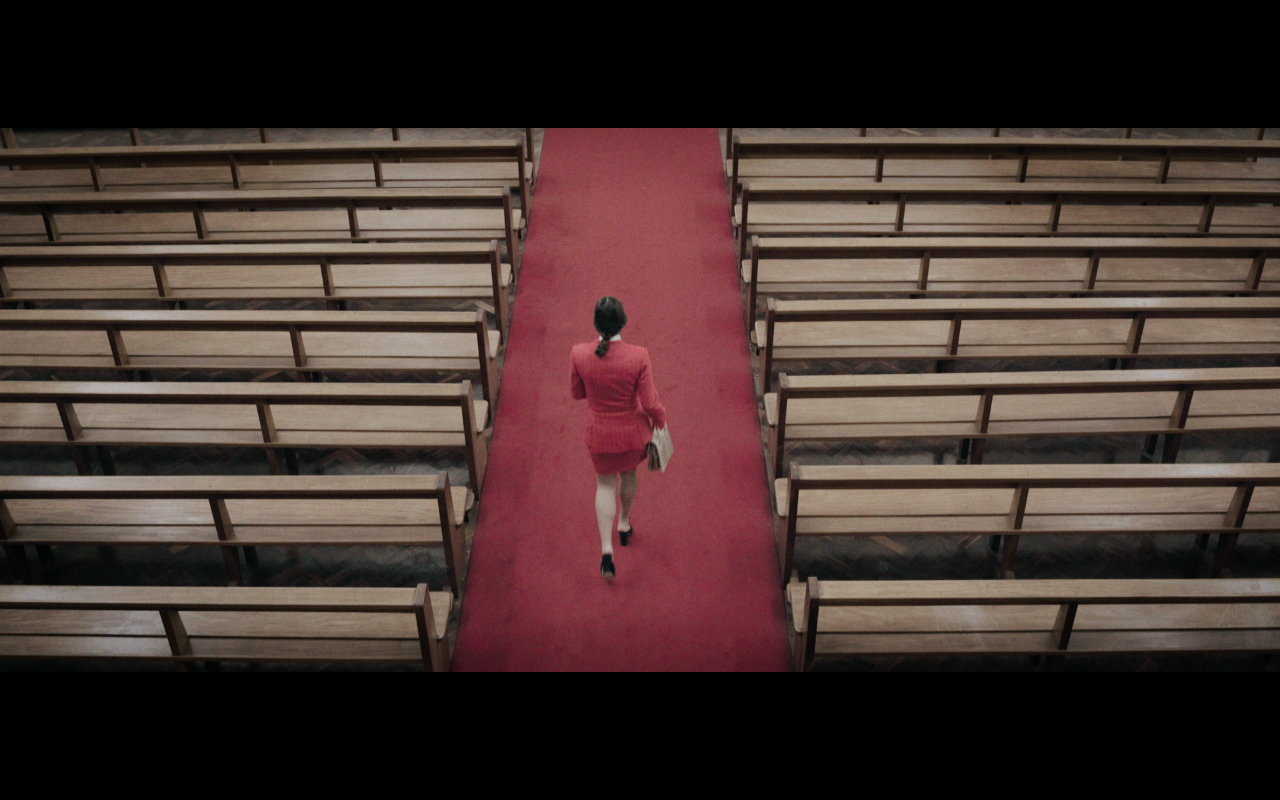Fugue is the culmination of a body of work that Brighton-born, London-based Niall Underwood — model, artist, writer and now, director — has made since being diagnosed with a dissociative disorder last year. Now, if you’re unfamiliar with DD, you’re far from alone. While we’re finally having discussions around mental health, dissociative disorders, are rarely mentioned. “There’s a rapidly evolving discourse surrounding mental health but we must not ignore the remaining stigma that saturates certain areas of the conversation,” Underwood explains over email. “We’ve come a long way in our attitudes towards depression and anxiety because I think it’s true that people find these conditions easier to identify with and understand.” To kickstart the dialogue and help people begin to understand, the BA Fine Art graduate wrote and directed Fugue.
“The film itself explores the psychological state of dissociative fugue; an episode of amnesia within which an individual temporarily forgets their own identity and travels to a different place to assume a new one,” he explains. “Though I have not experienced dissociative fugue myself, dissociative amnesia is something I struggle with. The film’s protagonist has been living in an unspecified German city under her assumed identity, Lina. The narrative takes place within the last day of Lina’s fugue, as her delusion starts to fragment and reality creeps in.
Working in collaboration with his older brother Alex ((i-D readers will know him as Adolescent), who composed Fugue’s original score, the short film stars artist-turned-actress Joana Kohen and features bespoke clothing by one of London’s brightest young designers, Dilara Findikoglu. As it goes on display as part of his video installation at the Central Saint Martins Degree Show 2017, Niall Underwood talks us through it.
If you’re comfortable in doing so, could you begin by telling us about your diagnosis?
I sought out talking therapy in 2015 in an attempt to unravel specific patterns of destructive behaviour that I’d been engaging in. Due to the fact that I felt as if I had no control over my actions, the words batted about were ‘compulsivity’ and ‘addiction’ — and I was referred to a specialist. During the follow-up sessions, as the conversation started to delve deeper, I experienced micro-amnesias. If I was asked a difficult question, something would catch my eye, or an unrelated thought would burst into my head, and in the seconds I engaged with that interruption, I would have forgotten that a question had been asked at all. This was the first time I became aware of my tendency to dissociate. There were periods of time when I’d been acting out (and not under the influence of drink or drugs) of which I had very limited recollection. There were also periods that I did remember, during which I did things that should have been physically painful and weren’t. After a year of therapy, it was deduced that I’d been experiencing regular episodes of depersonalisation.
How has your world, both in terms of life and work, changed since? How has your understanding of both dissociative disorders and yourself evolved?
Talking therapy is the only treatment for depersonalisation disorder, the focus of which has been on engaging in my emotions and being present within ‘myself’. Increasing my general emotional engagement has lessened the regularity and intensity of specific episodes of depersonalisation. In turn, this has relieved me of the bout of depression that usually follows an episode.
My first three years at university were unproductive. I was studying on a self-directed fine art course, but often fell at the first hurdle of making work; I couldn’t generate any ideas because I had no subject matter. I felt as if I had no interests, no emotions, no self. Whether your work looks introspectively or not, it’s very difficult to explore a topic creatively when you do not exist in relation to it. It’s like cooking food that you are unable to taste. My diagnosis has encouraged me to step back into the person I spent years walking along next to, providing me with subject matter and with a position from which I can understand it.
I think it’s important to acknowledge the considerable and unique contribution made by Yayoi Kusama to the conversation that surrounds depersonalisation disorder. Kusama is the only artist that I’m aware of whose practice directly explores a dissociative disorder from their own point of view. Not only this, but she’s explored the disorder in a way that is both beautiful and accessible.

Fugue is the culmination of a body of work that you have made since being diagnosed with a dissociative disorder last year.
Throughout the past year I’ve been working with performance and film. The earlier works in this series were solo performances drawn from a place of experience; my understanding of the subject matter was drawn directly from my own experiences of dissociation. For instance, in November I made an hour-long performance piece in which I used a dissociative drug to chemically induce the symptoms of the disorder. After this, I set out to contextualise my knowledge in order to understand the subject from an academic point of view and this was when I read about ‘dissociative fugue’. As I’ve never experienced dissociative fugue myself, this was the first I’d heard of it — the idea fascinated me.
What was the catalyst for Fugue?
It was actually my brother Alex’s idea to make a film. We were on a bus, travelling past Hyde Park, and when I explained the concept of dissociative fugue to him he said immediately “that would make a great film”. Alex is a composer, so he explained the term in the context of classical music. In short, the concept for a film, a musical score and a video installation all came from one word.
How did you decide upon your chosen narrative?
What you’re seeing is one day in Lina’s life, but the life into which she has recently stepped. She’s taken on a new identity, moved to a new country and is going about her daily business. I always liked the idea that she’s come from London, from a cultural context similar to mine, but she’s moved to this sparsely populated German city to live out this strange, misplaced fantasy she has of being ‘conventional’. The German link came from a week I spent working in Bremen last December — the city felt very awkward, intensely dystopian and strangely peaceful.
The film is part of my Central Saint Martins degree show. However, we were fortunate enough to have a project that people wanted to be involved in. Anna Taylor took mine and Alex’s ideas and developed them into realities. Dilara Findikoglu joined the crew as costume designer, working from a single prompt, ‘awkwardly conventional’, to design and create the suit Lina wears throughout Fugue. Dilara’s aesthetic fused perfectly with my own, bringing Lina to life.

Looking over the finished film, how do you feel?
Exhausted. The process has been intense — physically, mentally and emotionally. But seeing the finished product was well worth every sleepless night it took to create. I feel a healthy mixture of relief and excitement; I’m relieved that nothing went too horrifically wrong, and I’m excited to share the finished product of our considerable efforts with everybody who’ll see it.
Finally, what’s next? What excites you most about tomorrow?
Tomorrow, I expect to be monstrously hungover (tonight is our private view) and I’m distinctly unexcited about it… But, to take your question less literally — once the CSM Degree Show is out of the way there’s a few exciting things in the pipeline. Straight after the show, I’m leaving London to spend some time working on a project in Asia. Towards the end of the summer I’m relocating to a Norwegian island called Stokkøya as I’ve been offered an artist residency there. After the residency, I’m returning to the UK to work with Anna on a film that we’ve already started writing.
To find out more about dissociative disorders, or to reach out to someone about finding help, Mind offers advice on diagnosis, care and treatment.
Credits
Text Steve Salter
